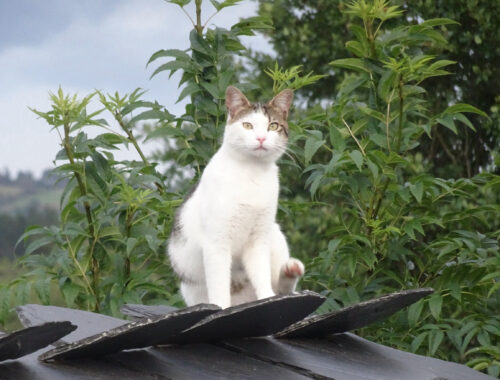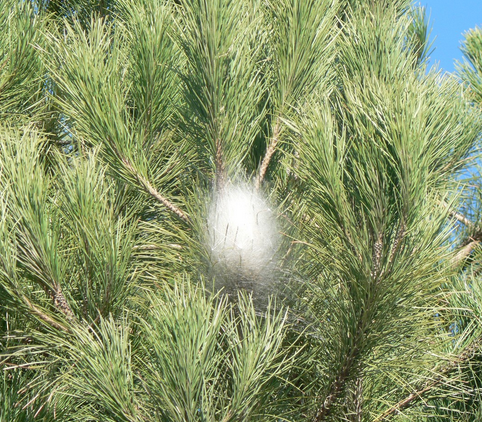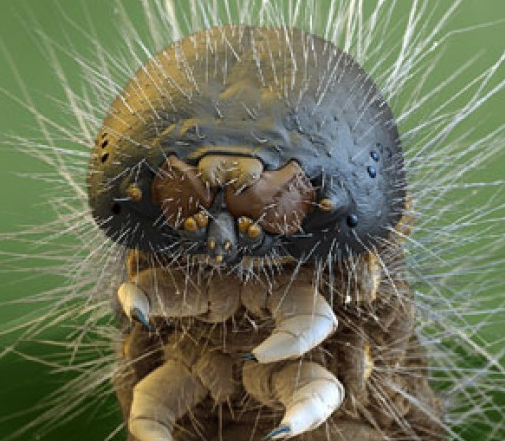Pine Processionary Caterpillar
The Pine Processionary Caterpillar gets its name from the line they form, nose to tail, as they climb down from their candy floss winter nests in the pine trees to pupate in the ground. They can destroy the pine trees, when there are many nests in a single tree, by eating all the young pine needles. They also have severely irritating hairs that cause nasty rashes, especially if they get in your eyes or nose and can be lethal to dogs if they try and eat them. Pine Processionary Caterpillars are considered to be a big problem in parts of France and Spain, where they have enjoyed the benefits of forestry monoculture and thrived.
We noticed the nests in trees when we first got to Spain – they are called ‘procesionarias’ here. The range of comments from local people went from, no problem if you stay away from them, to call the concello immediately, to blow-torch them! We noticed a few nests in some of our trees earlier this year and decided that we needed to do something, especially with visitors coming for retreats and a curious puppy nosing around anything that moves.
“Make yourself comfortable and set your boundaries.” John Lash
Boundary setting is a big issue for the planet and for humanity, but how do you set boundaries for caterpillars? I’m sure that our electromagnetic fields interact with all other living things around us and there is an invisible conversation taking place that lets the caterpillars know that they should stay away, but we weren’t prepared to take the risk on that alone. We don’t like killing things, but we’re not going to risk our dog’s lives over a nest of caterpillars. The battle lines were drawn and the caterpillars put on notice.
We decided on a three-pronged approach:
- Kill the caterpillars
- Kill the moths
- Plant trees and shrubs they don’t like amongst the pine.
We found a special trap for the caterpillars from France. It has no environmental impact on anything other than the caterpillars; it doesn’t use any poison, birds can still eat the caterpillars (tits love them apparently) and it doesn’t harm the trees. A collar around the affected trees with a earth-filled bag attached is used to catch the caterpillars when they descend to nest. They are trapped in the bag and then destroyed. Later in the summer we’ll hang a pheromone trap for the moths in the trees, to catch any moths that hatched from previous years. Their life cycle extends over two years. Studies have shown this to be 96-97% effective in ridding the area of caterpillars.
We’re also planting birch and willow around the edges of the pine trees, which are repulsive to the moths!
Drainage and Waterproofing
You May Also Like

Stork Love Story
December 30, 2024
Mr Luigi Dissolves the Spanish Inquisition
January 29, 2024




